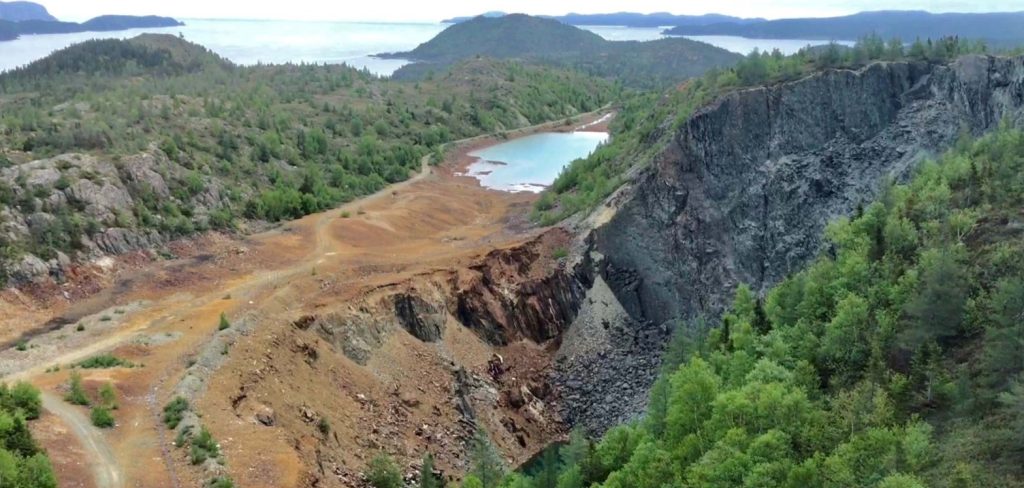Vulcan Minerals posts Carbonear exploration results, Newfoundland

Vulcan Minerals Inc. [TSXV-VUL] reported the following exploration update on its 100%-owned Carbonear project in eastern Newfoundland.
Highlights: Significant zinc and lead soil geochemical anomalies were identified. A gravity survey was completed in two test areas with positive results and historic core was resampled.
Soil Geochemistry: The company completed an extensive soil geochemical program in 2023 (1,243 samples) in addition to a 2022 (636 samples) soil program. Sampling was primarily focused along a magnetically anomalous zone in favourable structure as identified from high resolution airborne magnetic and LIDAR surveys completed by the company in 2022.
All samples reported were analyzed by SGS Canada Inc. The areas of primary interest are located within the 2023 soil grid particularly north and south of Gull Pond as per maps below covering the 2023 soil survey.
The Gull Pond area exhibits strongly anomalous zinc and lead values. A total of 125 samples exceed the 90th percentile value of 70 parts per million (ppm) lead with 13 samples exceeding the 99th percentile of 298 ppm. These values range up to a maximum of 0.1630% lead (1,630 ppm).
Regarding zinc, 126 samples exceed the 90th percentile value of 72 ppm with 13 samples exceeding the 99th percentile value of 207 ppm. These values range up to 628 ppm zinc. These results confirm the regional historic results for zinc and lead which is consistent with the area being one of the highest multi-element geochemical anomalies in Newfoundland based on lake sediment and stream sediment data.
Bolstered by the favourable soil results, the company completed a ground gravity survey over the Gull Pond north and south grids in May. The survey was designed as a test program to detect any near surface density anomalies that may be associated with zinc-lead sulfide bodies and to determine if the magnetic anomalies observed have any gravity correlation.
Sedimentary exhalative deposits (SEDEX) occur stratigraphically within certain favorable beds. At Carbonear, based on previous drilling (see below), certain sedimentary beds contain disseminated pyrrhotite (iron sulphide) providing a magnetic response that may be helpful in locating zinc and lead sulfides.
Based on the preliminary gravity data and interpretation, the north and south grids both exhibit bouguer and residual gravity anomalies. Further interpretation results will be released when finalized. The preliminary results are encouraging because the anomalies coincide with the magnetic trend and the highest geochemical zinc and lead soil anomalies.
The survey consisted of 50-metre stations on 200-metre line spacing. A total of 510 stations were recorded, covering approximately 4 square km.
Sampling Historic drill holes: The only reported drill holes on the project area were drilled in 1997. A total of 10 holes were drilled for 1,014 metres to test weak HLEM ground electrical conductors north and south of Gull Pond. Given that the company’s recent work has enhanced the prospectivity of this general area, the company resampled Holes CP-97-08 and CP-97-10 to better ascertain the tenor of mineralization previously identified.
These holes contain anomalous zinc mineralization over a potential stratigraphic interval of approximately 100 meters based on 23 historic core samples in Hole CP-97-08 (average 0.38% Zn) and 10 historic core samples in Hole CP-97-10 (average 0.25% Zn).
Following relogging of the core at the Newfoundland and Labrador government core storage facility it was felt that further sampling of these holes was justified based on numerous indications of finely disseminated mineralization.
To confirm and better define the tenor of mineralization, an additional 31 samples over 42.5 metres in Hole CP-97-08 and 26 samples over 47 metres in Hole CP-97-10 were taken for assay.
Patrick Laracy, president, commented: “While anomalous zinc-lead mineralization is not ore-grade, it does confirm the deposition of sulphides within a favourable sedimentary sequence for SEDEX style deposits and validates the potential for more robust zinc-lead mineralization within the system. Carbonear is an early-stage exploration project in a search of a world class SEDEX deposit. We are systematically exploring this large land package located about a 1.5-hour drive from our offices in St John’s with the objective of getting it to the drill target stage.”
The property was originally identified (1980) for its sedimentary exhalative base metal potential by Cominco. The project area has geologic attributes similar to other major SEDEX deposits worldwide.
Vulcan Minerals is a precious and base metals exploration company based in St. John’s, NL. The company has strategic land positions in multiple active Newfoundland exploration and development belts. The company has leveraged its exploration exposure in much of this land position through equity ownership of other explorers obtained by way of option and royalty agreements. It also holds approximately 30.5% of the shares in Atlas Salt Inc. [TSXV-SALT]. Atlas Salt is currently developing the Great Atlantic salt mine in western Newfoundland.
